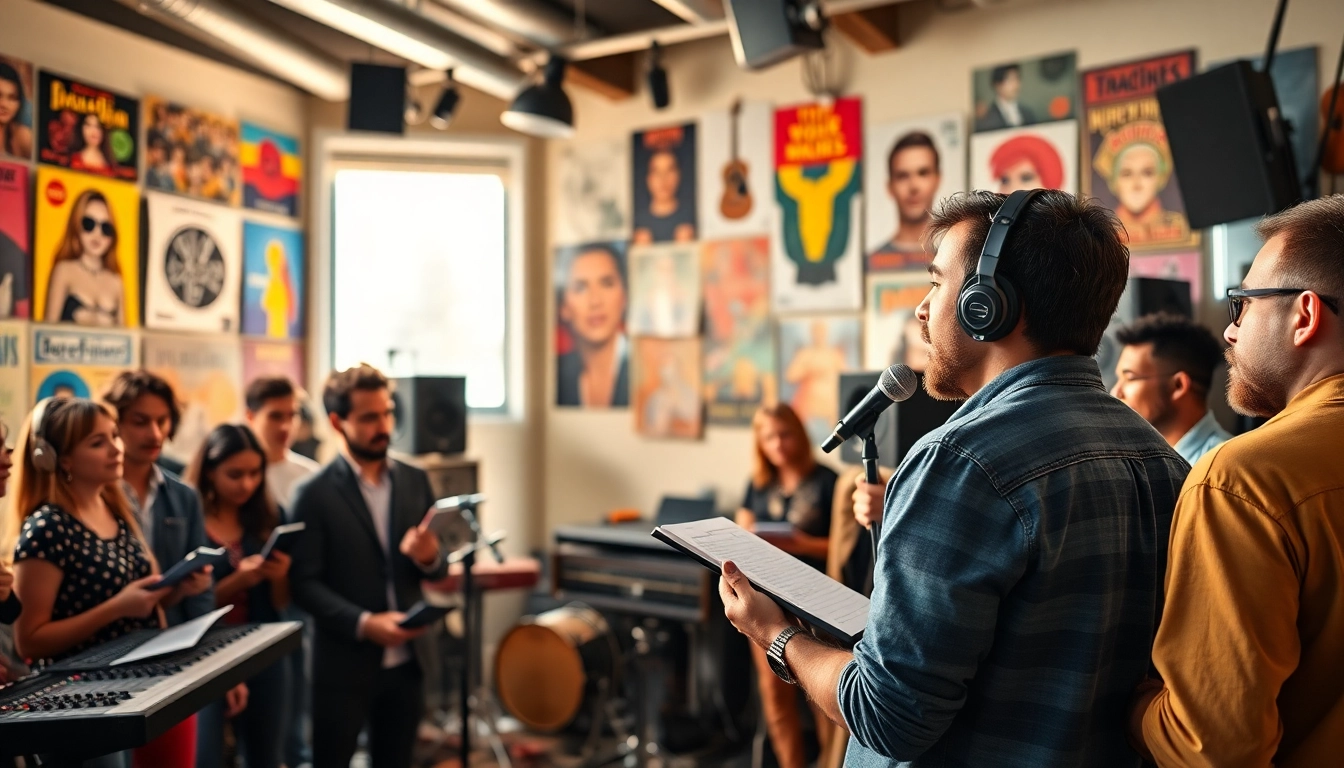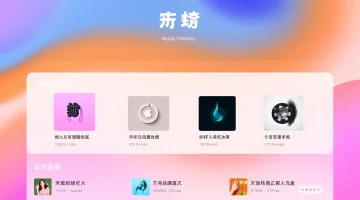
Master the Art of Music Pitching: Strategies for Success in the Industry
Understanding Music Pitching
Music pitching is an essential practice for artists seeking to connect their work with the right audience, influencers, and platforms. In the digital age, with countless artists vying for attention, knowing how to effectively pitch your music can be a game-changer. Whether you’re a seasoned musician or just starting out, music pitching serves as the crucial bridge between the creation of your art and its reception. Understanding the fundamentals, along with an evolution of its practices, is key for navigating the music landscape today.
What is Music Pitching?
At its core, music pitching refers to the process of presenting your music—be it a song, album, or any other form of musical work—to various stakeholders in the music industry. These stakeholders can include playlist curators, record labels, music bloggers, and even influencers on social media platforms. The goal is to garner interest, gain exposure, and ultimately secure placements that can boost your visibility and listener base.
History and Evolution of Music Pitching
The concept of pitching music is not new, tracing back to the days when artists had to rely on connections and local radio stations to showcase their work. However, the way music is pitched has dramatically evolved with technology. The rise of digital platforms like Spotify, Apple Music, and social media have transformed traditional methods. Once an artist needed a major label’s backing to reach audiences, today, independent musicians can directly share their music with listeners worldwide. Consequently, understanding the nuances of digital pitching becomes essential, as the landscape continues to shift rapidly.
Importance of Music Pitching for Artists
Music pitching is vital for artists for multiple reasons. First, it allows musicians to gain exposure by connecting with curators and media outlets that can amplify their work. Many artists find that securing placements on playlists can significantly increase their streams and improve their chances of being discovered by potential fans. Additionally, a well-executed pitch can lead to collaborative opportunities, press coverage, and even offers from record labels. Thus, mastering the art of pitching can be the key to an artist’s success in a competitive industry.
Key Elements of a Successful Music Pitch
Crafting an Engaging Music Pitch
The first step in any music pitch is creating a compelling narrative that reflects your unique artistry. An engaging pitch includes a hook—something that captures attention immediately—accompanied by a brief description of your music, any relevant achievements, and a personal touch that connects you with the recipient. Utilize storytelling techniques to convey your journey as an artist and what makes your music special. For example, if you’re an indie artist whose sound evolved from personal challenges, share snippets of that journey in your pitch.
Identifying Your Target Audience
Understanding your target audience is paramount in music pitching. Who are the people that resonate with your music? Know their preferences, what they seek in artists, and where they typically engage with new music. Research current trends and playlists to identify compatible curators and outlets that would likely celebrate your music genre. Tailoring your pitch to specific audiences increases your chances of gaining their interest and ensuring your music lands in the right ears.
Utilizing Data to Strengthen Your Pitch
Data analytics play a crucial role in refining your music pitch. Take time to analyze your streaming stats, social media metrics, and previous engagement rates. Utilize platforms like Spotify for Artists to gather insights on listener demographics and behaviors. By understanding which songs perform best and who engages with them, you can craft more personalized and data-driven pitches that appeal directly to potential curators’ interests.
Platforms for Music Pitching
Popular Streaming Services to Target
When it comes to music pitching, streaming platforms are at the forefront. Services like Spotify, Apple Music, and Deezer have playlists curated by both algorithm and real-life editors. Each platform offers distinct methods for submission. For example, Spotify allows artists to pitch their songs through the Spotify for Artists interface, typically requiring submissions at least seven days before release to maximize visibility. Understanding how to negotiate these platforms effectively can lead to fruitful placements that boost your audience reach significantly.
Leveraging Music Blogs and Online Communities
Music blogs and online communities remain powerful platforms for independent artists. Blogs not only provide reviews and features for tracks but also expose artists to niche audiences that may not be reachable via mainstream outlets. Engaging with communities on platforms like Reddit, forums, and genre-specific Facebook groups can open doors for valuable feedback and opportunities. Write tailored pitches specifically for bloggers, showcasing why their audience would enjoy your music.
Understanding the Role of Social Media
Social media has transformed the music industry landscape, allowing for direct interaction between artists and their fans. Platforms like Instagram, TikTok, and Twitter can be powerful tools for launching effective music pitching strategies. Engaging content, including behind-the-scenes footage, performance clips, and live interactions, can foster a loyal fanbase that supports your promotional efforts. Remember, the way you present yourself online can significantly impact your pitch. A strong online presence can entice curators to take a closer look at your work.
Best Practices for Effective Music Pitching
Do’s and Don’ts in Music Pitching
When pitching your music, adhering to best practices can make a substantial difference. Key do’s include personalizing your pitch, keeping it concise, and being professional. Make every effort to address recipients by name and reference their previous work to build rapport. Conversely, avoid mass emailing, using generic templates, and overwhelming recipients with excessive information about your music. Focus on quality over quantity, tailoring each pitch for the specific outlet or curator you are contacting.
Creating a Follow-Up Strategy
Following up on your pitches is as essential as the initial outreach. Many curators receive an overwhelming number of submissions and may overlook yours. A gentle follow-up email a week after your initial pitch can remind them of your music without overwhelming. Ensure your follow-up is polite, express gratitude, and reiterate your main selling points briefly. However, if there’s no response after multiple attempts, it may be best to re-evaluate your approach rather than persistently press for an answer.
Measuring the Success of Your Pitch
Once your pitches have gone out, tracking and measuring their impact is crucial for refining future attempts. Focus on metrics such as new streams, social media engagements, playlist placements, and any feedback received from curators. This data will help you understand what resonates well and what aspects of your pitch could use improvement. Utilize these insights to create a feedback loop that enhances your future pitches.
Enhancing Your Music Pitch with Networking
Building Relationships in the Music Industry
Networking within the music industry can provide invaluable support for your music pitching efforts. Building genuine relationships with fellow artists, producers, and influencers may open doors to collaborative projects and increase your chances of receiving referrals to curators. Attend industry events, concerts, and local showcases to meet like-minded individuals. Remember that networking is not just about what others can do for you, but what you can bring to the table as well.
Using Networking Events to Your Advantage
Music conferences, workshops, and local gigs are excellent venues for expanding your network. These events provide opportunities to share your music pitch in person and foster connections that can lead to future collaborations or placements. Participate actively in discussions, offer value by sharing insights, and be approachable. Make sure you have business cards or digital portfolios handy to leave a lasting impression on connections you make.
Collaborating with Other Artists and Influencers
Collaboration with other artists and influencers can significantly enhance your music pitch, amplifying your visibility. Co-create music, remix tracks, or promote each other’s work to tap into each other’s audiences. By working together, you can leverage their fanbase to introduce your music to a broader audience while simultaneously enriching your artistic portfolio. Furthermore, successful collaborations often lead to new insights and creative directions in your music career.



